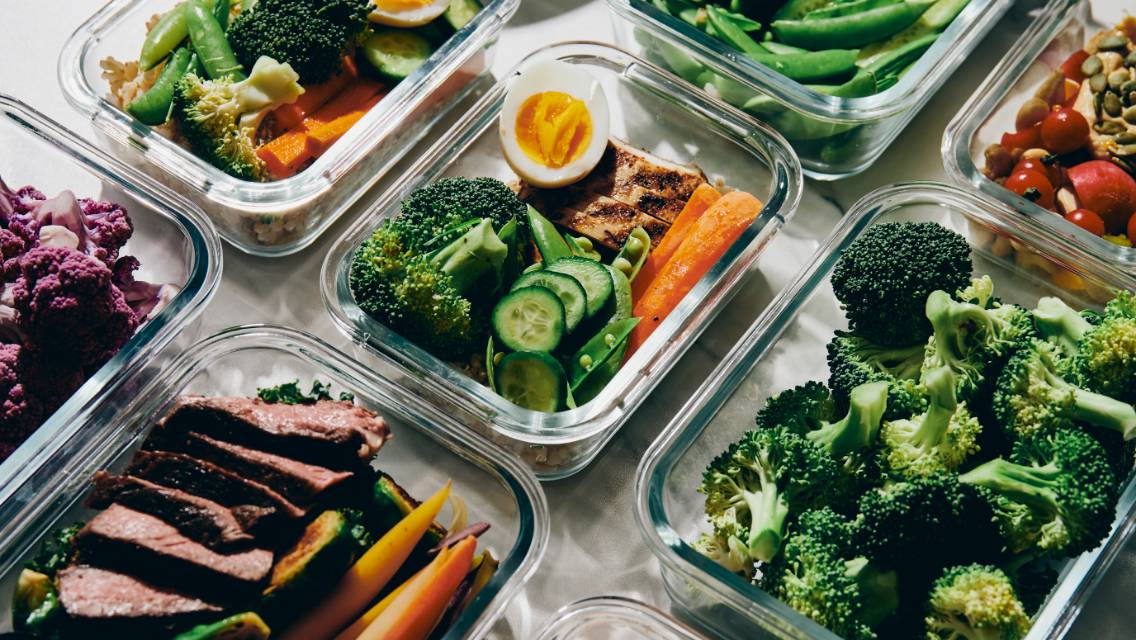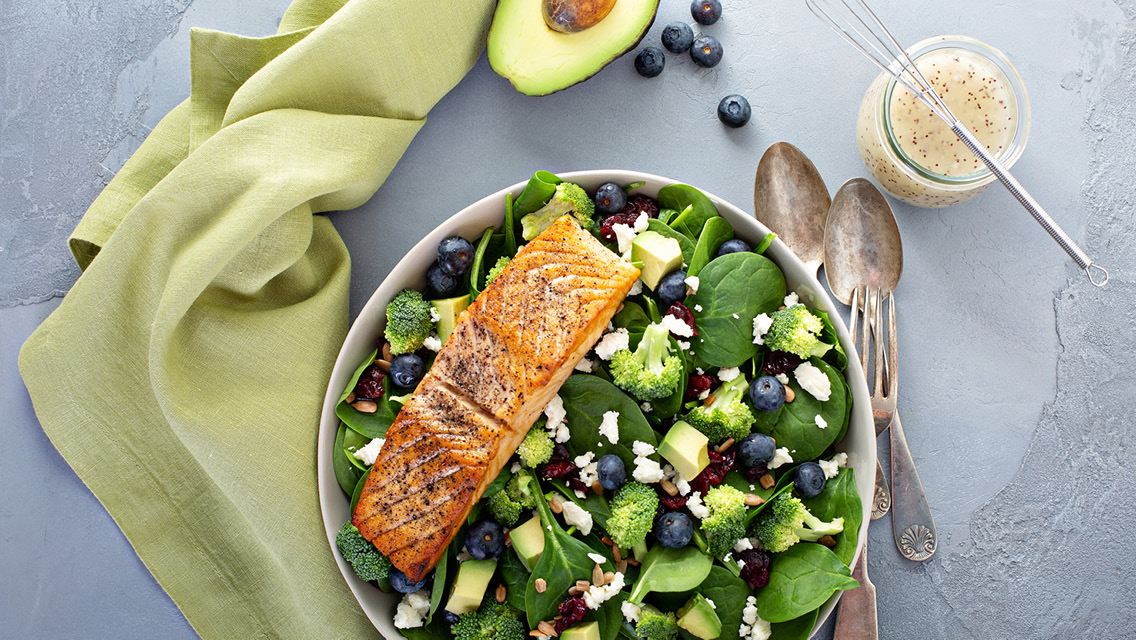In a routine that prioritizes health and fitness, consuming enough protein often takes center stage in the nutritional strategy. We’ve probably all seen those social media posts with people joking that their protein goals have become their full-time job. It can be a lot, which is why many people turn to conventional protein sources or processed protein products to meet their needs.
I’m a busy mom with a full-time coaching career who takes an anti-inflammatory approach to eating. I am able to reach my goal of 130 grams of protein per day while maintaining a commitment to clean, whole foods and spending only about 90 minutes per week on meal prep. There’s a way to do this that you’re likely not seeing on your social media pages — unless you’re following me.
As someone who lives this balance daily, I’ve developed strategies that allow me to nourish my body with adequate protein without compromising my decision to maintain a holistic approach to nutrition.
What Does a Holistic Approach to Nutrition Mean to Me?
My nutrition approach is not just about consuming certain macros — it’s about choosing foods that support my body’s natural functions and minimize inflammation. My non-negotiables include:
- Minimizing highly processed foods
- Eliminating inflammatory seed oils
- Choosing whole-food sources first
- Being mindful of food quality and sourcing
- Listening to my body’s response to different foods
Taking this approach has transformed how I feel, perform, and recover. But it does require more intentionality when you’re trying to hit specific nutrition targets, especially for protein.
Protein Quality Matters as Much as Quantity
Based on my body weight and activity level, my personal daily protein goal is 130 grams. (If you’re curious about the training I’m fueling for, it’s outlined in my Body Blueprint program, which you can learn more about here.) I could technically get to that target through various means, including protein bars, bottled protein shakes, and processed foods engineered to be protein rich. But not all protein sources are created equal, especially when we consider their inflammatory potential.
Conventional protein sources can contain:
- Artificial additives and preservatives
- Inflammatory oils
- Added sugars
- Dairy from conventionally raised cows
- Factory-farmed animal products
These have the potential to cause negative health effects — and may even interfere with the very recovery processes we’re trying to support through high-protein intake. Consider buying options that are organic and pasture-raised, grass-fed, or wild-caught (depending on protein source), as well as those that are free from artificial hormones and antibiotics. It’s also important to seek out fish that’s low in mercury and other heavy metals.
There’s a pervasive myth in fitness circles that getting adequate protein requires compromising on food quality — protein bars with mysterious ingredients, powders with artificial sweeteners, heavily processed meat products. My experience proves otherwise.
My Daily Protein Distribution Strategy
Rather than treating protein as something to “get in” in whatever way possible, I approach it as an integral part of each meal. I typically distribute my targeted 130 grams of protein throughout the day like this:
Breakfast (approximately 30 to 35 grams)
My morning protein often comes from a few sources:
- 3 pasture-raised eggs (6 to 7 grams of protein per egg)
- Chicken sausage without additives (about 14 grams of protein per serving)
These are complete protein sources that deliver essential amino acids. The eggs also provide important nutrients like choline, which supports cognitive function and metabolic health.
I always pair my protein at breakfast with carbohydrates — usually two sourdough bagels or strawberries or an apple. Because this is the meal I eat before I strength train, the combination helps give me an edge for my training session. This approach can vary for each individual based on their meal and training timing.
Lunch (approximately 40 to 45 grams)
Midday is when I focus on heartier protein:
- Grass-fed beef (about 22 grams of protein per 3-ounce serving)
I often eat this in the form of a nourishing bowl with plenty of vegetables and anti-inflammatory herbs and spices. Sometimes it’s also accompanied by quinoa (one of the few plant sources with a complete amino acid profile).
Grass-fed beef contains a healthier fatty acid profile than conventionally-raised beef, with higher omega-3s and conjugated linoleic acid (CLA), which may help reduce inflammation.
Dinner (approximately 35 to 40 grams)
My evening protein sources rotate between these options:
- Pasture-raised chicken (about 26 grams of protein per 3-ounce serving)
- Wild-caught salmon or other fatty fish (about 22 grams of protein per 3-ounce serving)
- Occasionally other clean animal proteins like pasture-raised pork or lamb
I intentionally incorporate fatty fish like salmon at least twice a week as it’s a source of anti-inflammatory omega-3 fatty acids. The protein is almost secondary to me as salmon has an incredible nutritional profile.
Snacks and Supplements (approximately 15 to 20 grams)
To bridge any remaining gaps to meet my protein goal, I turn to:
- Grass-fed whey protein powder (for those with certain preferences or sensitivities, you can also turn to plant-based options; I prefer LTH Grass-Fed Whey Protein)
- Grass-fed beef sticks without additives or preservatives
- Plain Greek yogurt from pasture-raised cows, on occasion
This daily distribution strategy typically brings me to my 130-gram target while also allowing me to consume clean, whole foods.
Complementing Protein With Anti-Inflammatory Foods
Protein doesn’t exist in isolation in my nutrition plan. I strategically pair my protein sources with a variety of nutrient-rich foods:
- Abundant fresh fruit for hydration, fiber, and antioxidants
- Diverse vegetables for phytonutrients and fiber
- Herbs and spices (such as turmeric, ginger, and cinnamon) for their anti-inflammatory properties
- Healthy fats like avocados and olives
This comprehensive approach ensures that while meeting my protein needs, I’m also obtaining other necessary nutrients. These other food sources are an essential part of my nutrition strategy that’s focused on fighting inflammation (rather than contributing to it).
A Note for Those With Autoimmune Conditions or Food Reactions
As someone who is managing an autoimmune condition, focusing on clean, whole foods and anti-inflammatory nutrition strategies is invaluable for how I feel and function each day. Here are some benefits I’ve found from starting with single-ingredient, high-quality protein sources (always consult with your healthcare provider for your unique circumstances):
- Identify triggers more easily. It’s often simpler to identify the food(s) that might be causing a reaction when you’re eating whole foods (with single or minimal ingredients).
- Minimize exposure to common allergens. Some processed protein products may contain dairy, gluten, soy, or eggs, which are known for being foods people commonly react to.
- Reduce overall inflammatory burden. By removing inflammatory ingredients, you can give your immune system a break and potentially see an improvement in symptoms.
- Customize based on individual tolerance. Some may do better with plant proteins, while others might thrive on animal sources. A whole-foods approach allows room for personalization.
Practical Tips for Implementation
By prioritizing nutrient-dense protein sources and planning thoughtfully, I consistently hit my protein goal while also maintaining a diet that supports my holistic approach to nutrition. The key is planning ahead and making quality protein a priority, not an afterthought. If you’re inspired to adopt a similar approach, here are some practical starting points:
- Calculate your personal protein target based on your body weight and activity level. (Learn more: “How Much Protein Do I Need?”)
- Audit your current protein sources for inflammatory ingredients and quality.
- Plan your meals around whole-food proteins first, then add carbohydrates and fats.
- Batch cook quality proteins to ensure you always have healthy options available.
- Reserve supplements for genuine gaps rather than making them your primary protein source.
- Listen to your body’s responses to different protein sources and adjust accordingly.
- Consider the full nutrient profile of your protein choices, not just the grams of protein they contain.
Adopting a Holistic Protein Perspective
Meeting your protein goals while maintaining a holistic, anti-inflammatory diet isn’t about finding loopholes or “magic” products. It’s about leveraging the power of whole foods and being mindful of sourcing and intentional with your choices. Framed this way, you can see protein as not only a muscle-building macronutrient, but also as a vehicle for comprehensive nourishment.
By choosing quality, whole-food proteins and thoughtfully distributing them throughout your day, you can support your performance and recovery goals while honoring your body’s needs for nutrition. This isn’t just about physique or performance: It’s about creating sustainable health practices that serve your body for the long-term.





